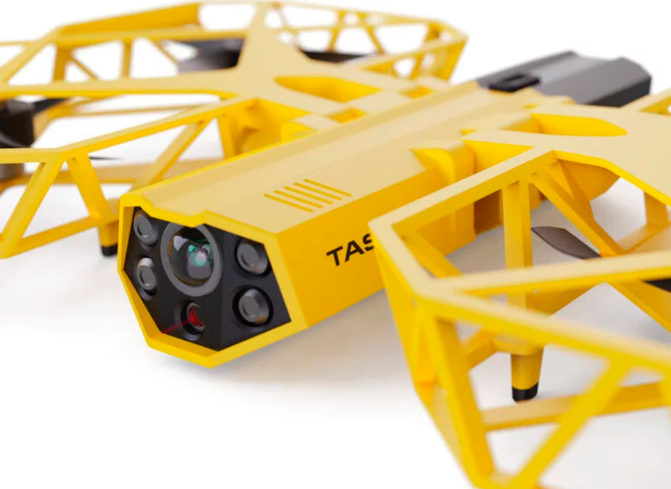Taser Drones: Go or No?
Axon’s taser drones are designed to locate and tase possible shooters.
May 23, 2023
As school shootings occur across America, the most recent (at this article’s publication) is the Nashville shooting in Tennessee, which took the lives of six people; the only way to stop the shooter, for now, is by overpowering force, usually by law enforcement. But as technology evolves, that is going to change.
In June 2022, a technology and weaponry manufacturing company called Axon had the idea to create remote-controlled drones armed with tasers to end a campus threat. However, the project stopped when some members of Axon’s ethics committee resigned in protest.
In an interview by NPR.org, Axon’s founder and CEO said, “We are pausing work on this project and refocusing to further engage with key constituencies to fully explore the best path forward.”
Some Day Creek students expressed enthusiasm about the project.
“It would be cool, it would be more cost efficient, and fewer lives would be sacrificed. It’s probably cheaper to buy one taser on a drone than to buy several tasers for several humans,” said 7th grader Wayne C.
It is, in fact, more affordable to buy a taser drone than to hire law enforcement and arm them with tasers. According to Glassdoor.com, a police officer in California earns an average salary of $65,000. Tasers cost between $400-$1500 each, whereas a taser drone only costs $1000 per year (not including maintenance fees).
While some students see a benefit to these drones on campus, other students disagree. They fear the technology would be a safety hazard.
“I think it is stupid because students could get tased by [the drones]. It can protect the students and all, but I still see a student accidentally getting tased by it,” said Sifan G.
According to Fast Company, taser drones would be installed on class ceilings. If an active shooter is detected inside a room, a drone would be deployed to locate and tase a potential shooter.
Despite the potential benefits, drones also raise safety concerns if there were a malfunction or a false-alarm.
“Having the drones around constantly or released when there’s a false warning could get dangerous and very chaotic. It’s not a person. You can’t just tell it to stop. It’ll just keep firing,” said Sydney T.
Though automatically released, the drones intend to be monitored by humans and AI, with available controls such as panic buttons through cameras. These tools can be used to decrease the possibility of a false-alarm and improve the drones’ reaction times.
There are also concerns about the necessity of drones on a campus where a threat is generally non-existent.
“If it is a more safe community, we don’t have as much risk of a shooting happening. There’s a higher risk that it’ll end up harming citizens instead of helping them,” said Ruiee S.
If needed, drones do not demonstrate emotion nor offer comfort toward bystanders.
“Drones can’t reassure students or help them feel safe, so they’re just guns flying around in the sky,” said Sydney T.
Although it may seem like science fiction, schools with weaponized drones may be a reality as security modernizes with campus needs.
“We’re more dependent on technology now; these drones would help save lives. I’d feel safer knowing that there are devices used to help protect us without risking other people’s lives,” said Wayne C.






